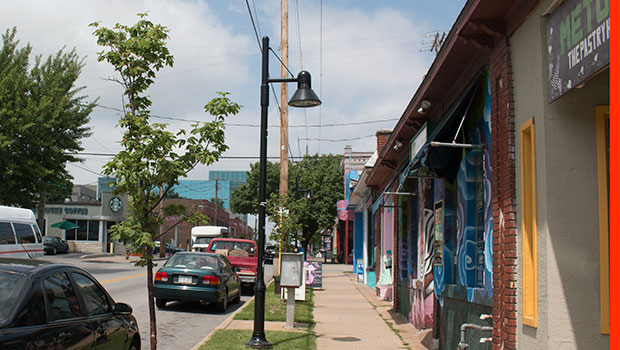Ginkgo trees outlasted whatever killed the dinosaurs, some survived the Hiroshima atomic bomb, and many will remain on 39th Street.
The lush trees with the unfortunate stinking fruit became an issue there last year. That was after Google severely chopped the tops of about 20 of them that were more than two decades old.
For more than a half mile, one side of the street was left shaded by what was described as dying sticks.
People wanted them replaced with another kind of tree and Google did that with tiny red maple trees.
But the leaves are still falling. Businesses on 39th may ask the city to replace those tiny trees with larger ones, said Amanda McGee, executive director of the West 39th Street CID.
But they will keep the many remaining healthy ginkgo trees, keep their lush fan shaped leaves with beautiful fall color, keep the fruit that smells like vomit.
Mixed feelings for ginkgos are common nationwide, according to front-page article Monday in the Wall Street Journal.
From the article:
The trees that date back more than 200 million years were much used in modern cities because of their strong resistance to diseases, pollution “and pretty much everything else.”
But when planted, officials could not know of the down side. Young, female, seed-producing trees are impossible to tell from males and it takes a female at least 25 years to produce its first seeds.
Besides the smell, the flesh of the seeds includes a chemical like poison ivy that can cause similar skin reactions.
The nuts inside are toxic raw but edible when cooked, and are found in Asian cuisine.
McGee said the 39th street merchants pay to treat the trees each year to prevent as much fruit as possible, but it has limited effect because the trees apparently can change sex.
“They’re really a different kind of tree,” she said. As for the malodorous fruit, she said, “If they sweep them right after they fall it’s not a big problem.”
The Wall Street Journal article quotes Peter Crane, dean of Yale University school of forestry and author of a book on ginkgo trees.
People said famed architect Frank Lloyd Wright constantly complained about the smell of the ginkgo seeds at his home.
But Wright never cut that tree down and learned to live with it, Crane told the journal. “And I think that’s what other people should do too.”




Who’s talking